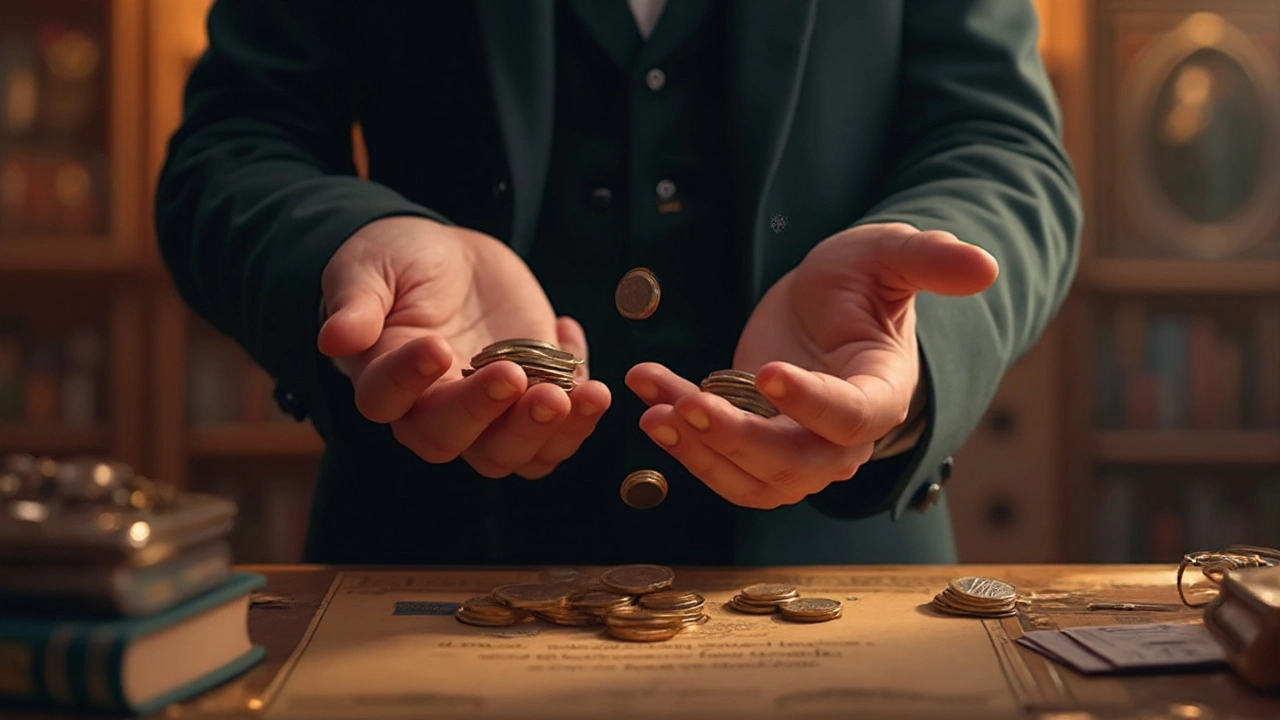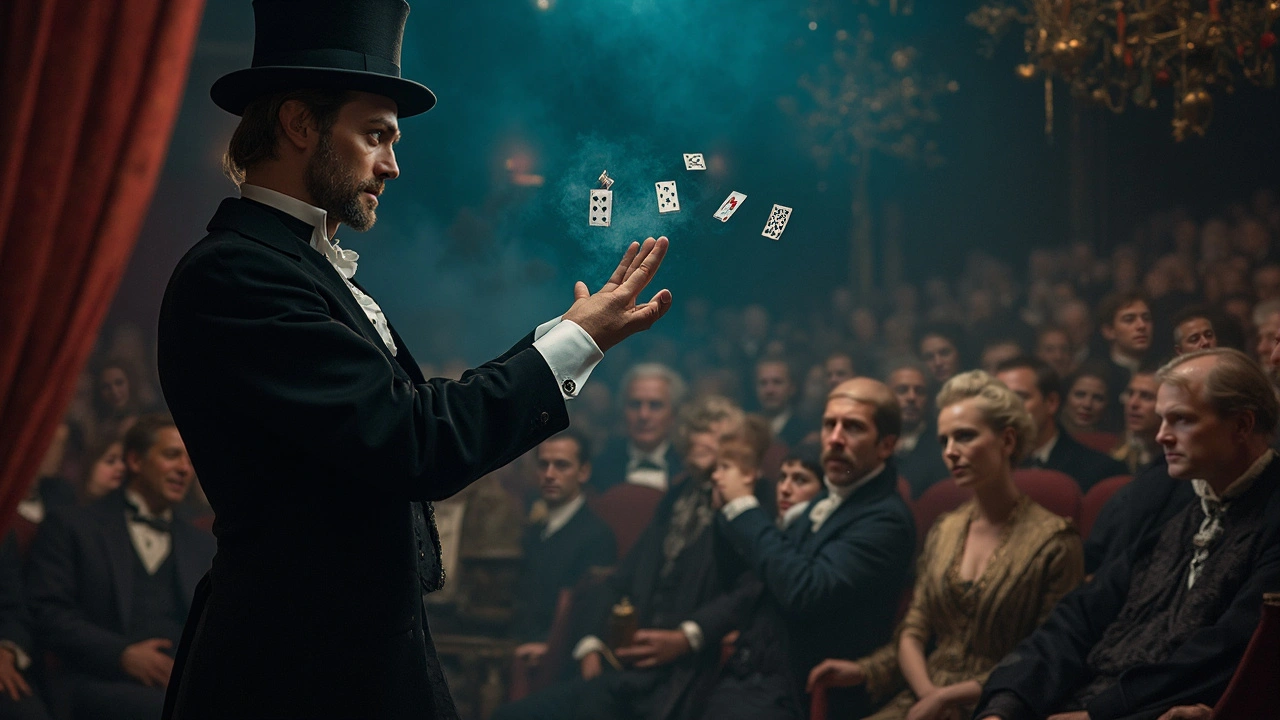Ever wondered how magicians manage to pull rabbits out of hats or make coins disappear into thin air? It's not just sleight of hand—there's an entire science behind the magic. At its core, a lot of magic tricks boil down to some nifty psychological principles.
One of the key players in a magician's toolkit is misdirection. This isn't just about distracting you with flashy hand movements or big gestures. Magicians are masters at steering your attention exactly where they want it to be, cleverly hiding their trickery in plain sight.
Our brains are wired in ways that can be... let's say, a little quirky! Psychologists have studied how attention, memory, and perception work—and magicians exploit these quirks. For example, when you're focused intently on one thing, you actually become less aware of everything else around you. It's like your brain gets tunnel vision, making it the perfect time for a magician to make their move.
- The Art of Misdirection
- Cognitive Psychology in Magic
- Visual Illusions Explained
- Practical Tips for Beginners
The Art of Misdirection
Misdirection is the beating heart of most magic tricks. It's all about controlling where the audience is looking, which isn't as simple as 'look here, not there.' Magicians use this technique to guide your attention away from the actual shenanigans happening right under your nose.
One of the classic forms of misdirection involves using big, bold gestures. Imagine a magician waving one hand dramatically or pointing somewhere, all while quietly palming a card or making something vanish with the other hand. Your brain is so busy processing the big action that it misses the stealthier moves.
Another sneaky method includes verbal cues. By telling a story or creating a playful interaction, magicians make their audience focus on what's being said rather than what's being done. This ensures that their sly schemes stay in the dark.
How Pros Do It
Pros like Harry Houdini took misdirection to a whole new level. His escapes were legendary not just for his skill, but for how he'd divert attention—often setting up 'impossible' situations that made the reveal even more thrilling.
Practical Misdirection Tips
- Keep it simple. Start with basic tricks that only require a slight distraction.
- Practice your storytelling. The more engaging your narrative, the easier it is to control focus.
- Use props wisely. Bright or unusual items make excellent tools for drawing eyes away from your main move.
Researchers have even studied how effective misdirection is in magic. In one study, it was found that people miss over 50% of changes if their attention is effectively diverted. It's a testament to just how strong a tool misdirection can be when performed right.
Cognitive Psychology in Magic
When it comes to magic tricks, cognitive psychology is the secret sauce that turns simple sleight of hand into jaw-dropping illusions. The science of the mind is a powerful tool for magicians, and understanding how our brains work makes their trickery even more impressive.
Attention and Perception
Magicians have a knack for guiding our attention, using techniques that play on how we perceive the world. One classic example of this is the 'disappearing ball' trick. The magician throws a ball in the air a few times. On the last throw, the ball seemingly vanishes into thin air, and your mind is left trying to catch up. But here's the kicker: the ball never truly leaves the magician's hand. They just mimicked the throwing motion, and your brain filled in the blanks.
Why does this happen? It's simple. Our brains are wired to look for patterns and predict outcomes based on past experiences. When we expect something to happen—like watching a ball being tossed—our brains sometimes get a little ahead of themselves, leading to illusions that seem real.
Memory and Misdirection
Memory is another area magicians exploit. You're likely familiar with the 'pick a card, any card' routine. A magician asks you to pick a card, memorize it, and then somehow, despite a chaotic shuffle, the magician produces the exact card. Part of the trick lies in making sure you remember the card vividly while forgetting all the unnecessary details.
By directing your focus onto one particular part of the trick, they can mess with your perception and memories. Our ability to retain information is easily influenced by where our attention is aimed, and magicians use this to conceal their methods.
The Role of Expectation
Expectation is a biggie in the world of magic. Much of what we perceive is shaped by what we expect to see. This is why magicians often set the stage to make an outcome appear inevitable. They're basically hacking into our mental scripts.
To make this even more interesting, here's a surprising fact: According to research, nearly 80% of people can't remember what they just saw during a magic trick if they're expecting something else. Crazy, right? Here's a quick table to illustrate this:
| Expectation Set | Memory Recall |
|---|---|
| With Expectation | 20% |
| Without Expectation | 60% |
In a nutshell, magicians artfully manipulate attention, memory, and expectation to create illusions that toy with our understanding of reality. So next time you're watching a magician at work, think about the clever psychological principles they're using to baffle your mind!

Visual Illusions Explained
Magic tricks often leave us baffled because they tap into our brain's tricky relationship with what we see—enter the world of visual illusions. Remember those drawings where you just couldn't figure out if it was a rabbit or a duck? That's a simple example, but in the hands of a skilled magician, these illusions become mind-blowing spectacles.
How Our Brains Process Visual Information
Our eyes take in a lot more information than we actually process. The brain is like your computer's graphic card, picking what to render in detail and what to leave in the background. Magicians use this to their advantage by showing us what we expect to see, not necessarily what's really happening.
Take the famous saw-the-lady-in-half trick. Your brain knows it's not literally happening, but the visual setup tricks you into an illusion. Here, the trickster sets the stage so your mind fills in the blanks the way they want.
Types of Optical Illusions
- Literal Illusions: These create images that are different from the objects that make them.
- Physiological Illusions: Caused by excessive stimulation of the eyes and brain (think afterimages).
- Cognitive Illusions: Here, your brain makes unconscious inferences. Magicians love this, as it lets them lead your thoughts astray.
These categories help magicians craft experiences that defy expectations, guiding your senses away from what’s occurring behind the scenes.
The Role of Perception and Expectation
Expectations hugely impact perception. If you think a magician will pull a rabbit out of a hat, your mind starts looking for it—or its absence. This expectation can be manipulated with visual cues. A magician might direct your attention intensely to the hat while doing the real maneuver elsewhere.
Understanding these illusions in magic tricks isn't just for would-be magicians. It's about appreciating how our brains interpret the world, reminding us that sometimes what we see isn’t always the truth!
Practical Tips for Beginners
So, you want to get into the world of magic tricks? Great choice! It doesn’t require a ton of fancy gear to get started. You’ll be surprised at what you can do with just a deck of cards and a bit of practice.
Start Simple
Don't dive into big illusions right away. Begin with simple card and coin tricks. These build a foundation for understanding how illusions work.
Here’s a classic to start with: the disappearing coin trick. Hold a coin in your right hand. As you pretend to pass it to your left, really keep it in your right. The secret is in convincing the audience that the coin has moved. Work on making your actions smooth and natural.
Practice is Key
It sounds obvious, but nothing beats practice. Stand in front of a mirror to see what your audience sees. Pay attention to every small movement. The more you rehearse, the smoother and more convincing you become.
Learn to Misdirect
This is one of the most powerful tools in your arsenal. The trick is to draw attention away from what you don’t want the audience to see. Use eye contact or conversational cues to guide where they look. It’s like being a storyteller but with your hands.
Breakdown: Mastering Misdirection
- Eye Contact: Use your gaze to influence where the audience looks. Look at your empty hand to reinforce the illusion.
- Gestures: Use big gestures with one hand while the other does the secret move.
- Timing: Make your move when your words create curiosity or excitement. They’ll pay attention to the story, not your hands.
Join a Community
Join online forums or local magic club meetings. There, you can learn from other magicians who will give you feedback and new perspectives.
If you want to track your progress, try performing for friends or family. They're your best critics and supporters.
With these tips, you're well on your way to leave your audience spellbound. Remember, the magic isn't just in the trick—it's in the performance. Go out there and wow some folks!

